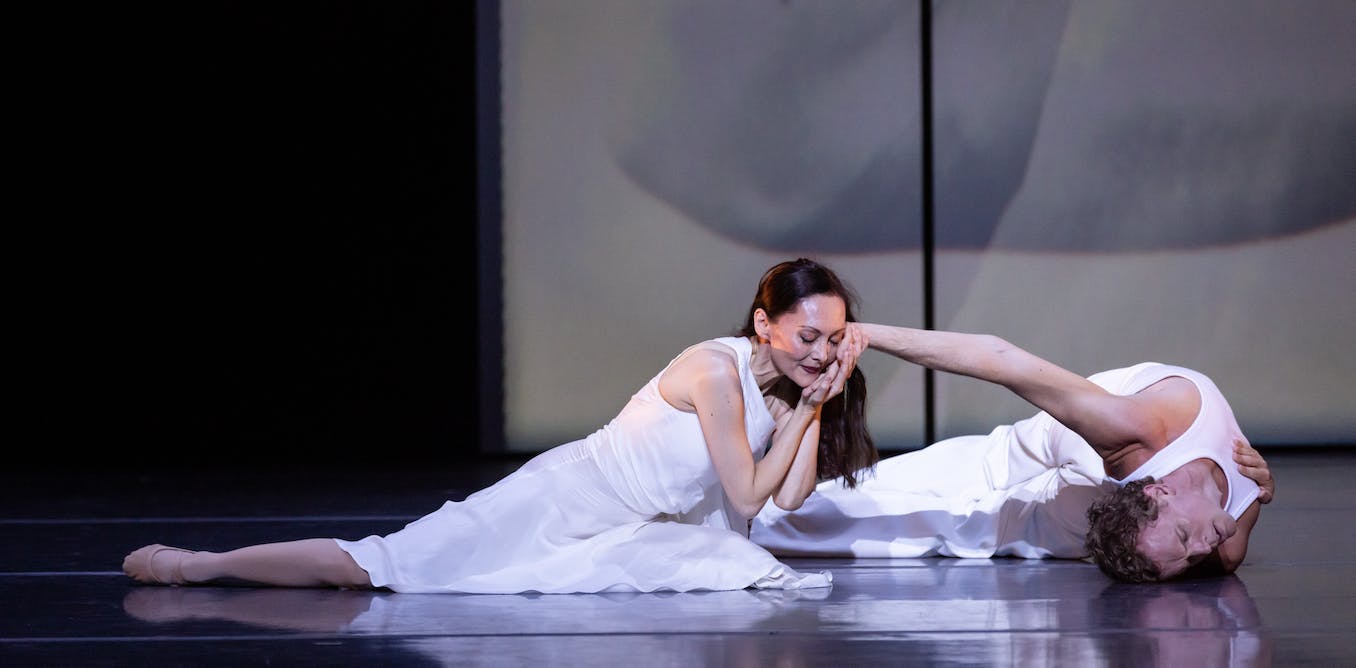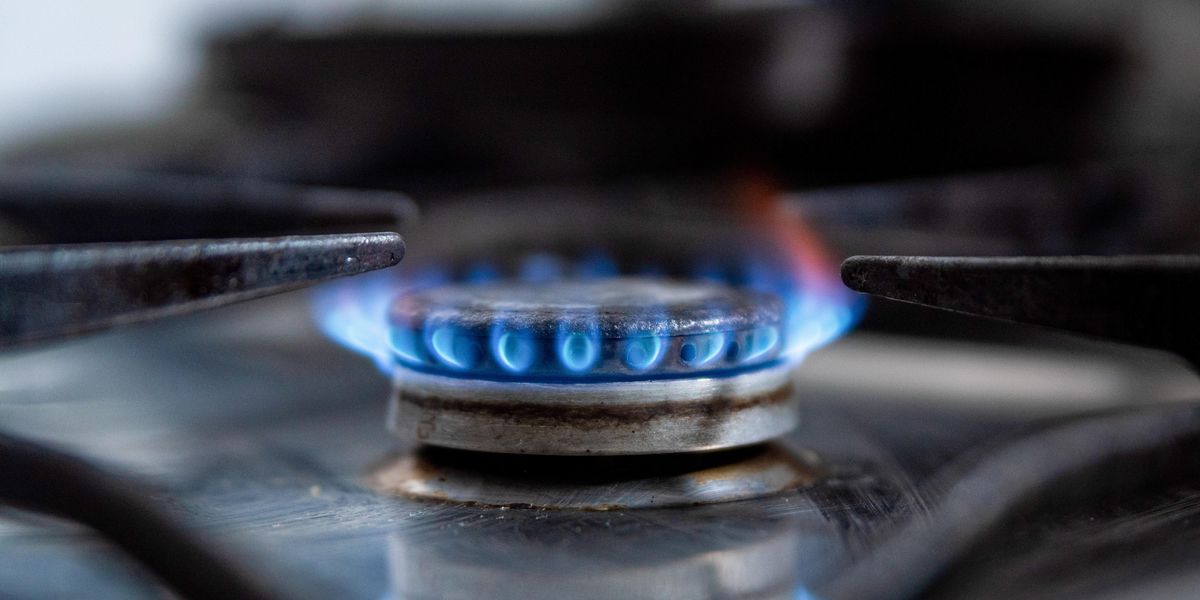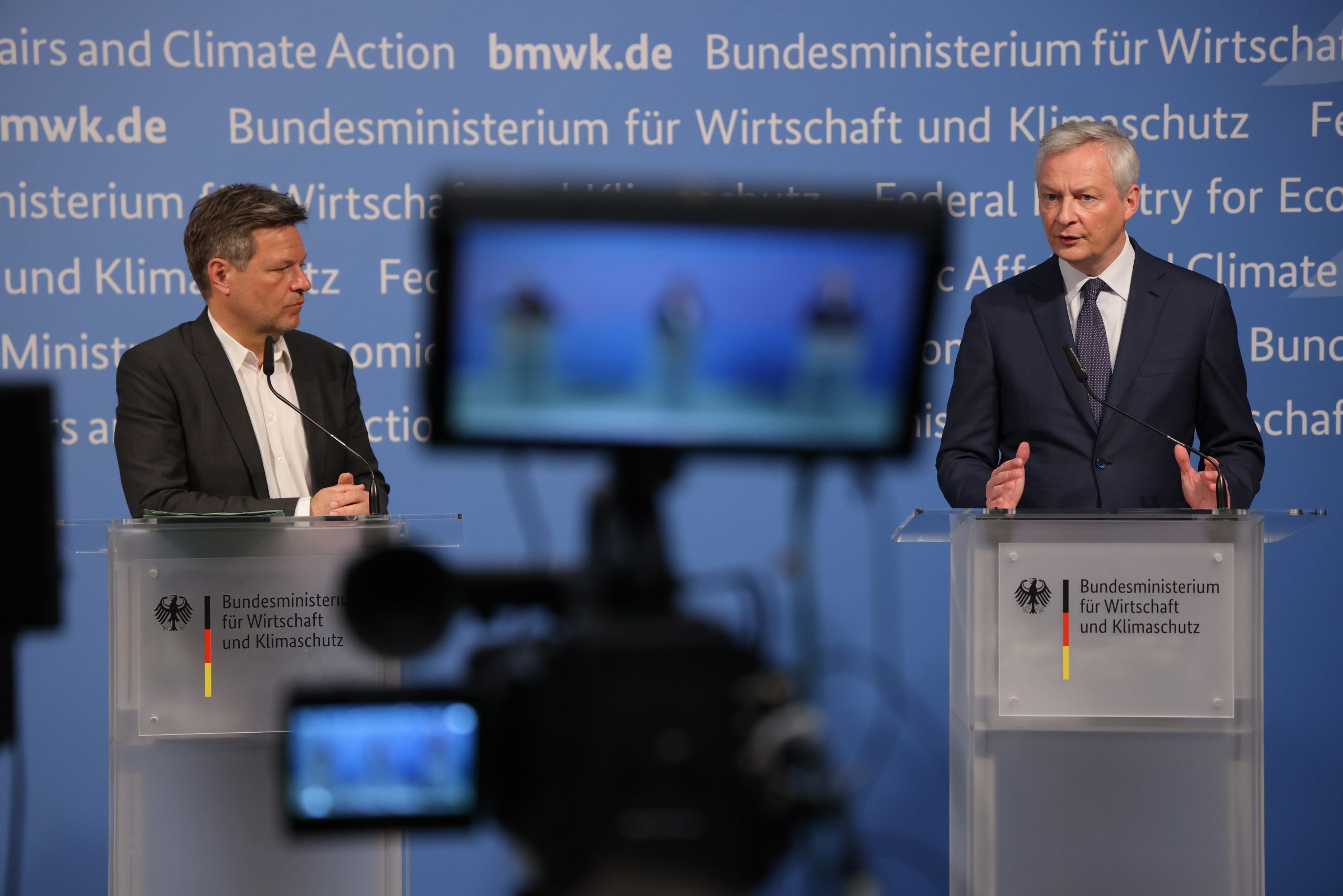When The Australian Ballet was founded in 1962, its charter stated that, alongside international repertoire and visiting international choreographers, it must engage Australian choreographers and produce Australian works.
But what does “Australian” look like in ballet?
In 1989, dancer, teacher, choreographer and director of The Ballet Guild (later Ballet Victoria) Laurel Martyn was asked about what it meant for ballet to be Australian:
It’s Australian because it comes out of our experience, what we think, how we do things […] It must come out of our own lives, our own way of seeing.
Martyn had choreographed her first Australian ballet in 1941. The project of creating Australian ballet is not a new one.
In 1964, Robert Helpmann claimed his ballet The Display was the first Australian ballet, because it was the first with an Australian score, designer, story and choreographer.
His ballet met all those criteria with its Aussie rules football, machismo, bush picnics and lyrebirds – but there had been many much earlier than his.
Like Helpmann’s ballet, some focused on Australian cultural life, such as Kira Bousloff’s The Beach Inspector (1958) and Rex Reid’s The Melbourne Cup (1963).
Others celebrated Australian industry. Joanna Priest’s The Lady Augusta (1946) was about the maiden voyage of a steamship along the Murray River to transport wool. Valrene Tweedie’s Wakooka (1955) was about life on a sheep station.
Still others looked to the rich natural environment, such as Martyn’s Voyageur about Australian migratory birds (1956).
And there were those that appropriated Australian Indigenous culture in their attempt to create an identity of this place. The most infamous of these was Beth Dean’s Corroboree with white dancers in blackface performing for Queen Elizabeth II in 1954.
Since then, Australian ballet has radically transformed the way that it includes First Nations identity in its construction of what it means to be Australian. The 1989 founding of Bangarra Dance Theatre was key to this new Australian identity in dance.
A reflection of this transformation was The Australian Ballet’s 1997 work Rites, a creation of then Bangarra artistic director Stephen Page. Page brought the two companies together in a First Nations’ reimagining of Stravinsky’s Rite of Spring.
At The Australian Ballet’s 30th anniversary in 1992, the company staged an Australian reimagining of The Nutcracker, choreographed by Graeme Murphy.
Murphy’s ballet told a story of the importance of migration to Australia: a history of how war in Europe had led many Russian dancers to stay, enriching our cultural landscape and firmly setting ballet’s roots in this country.
Now, for its 60th anniversary, the company is again asking what is an “Australian ballet”. This time it’s answering the question with a two-part program Identity. Identity features Wiradjuri man Daniel Riley’s THE HUM, a collaboration with Australian Dance Theatre, and Alice Topp’s Paragon, which brings back to the stage many company alumni.
Both works demonstrate an approach to creating an Australian ballet that, as the program suggests, “explores the community of the stage”. They each return to Martyn’s statement that for ballet to be Australian it must come from us.
Who is on that stage as part of that community, then, becomes critical.
Explainer: what is contemporary dance?
THE HUM
THE HUM has a powerful First Nations presence including choreographer Riley, composer Deborah Cheetham Fraillon, costume designer Annette Sax and dancer Karra Nam, and engages a conversation not only with white settler Australia but also between contemporary dance and ballet.
Dancers encounter each other with a deep breath in. Holding their gaze, they drop twice at the knees with two short sharp outbreaths: confrontation and common ground.
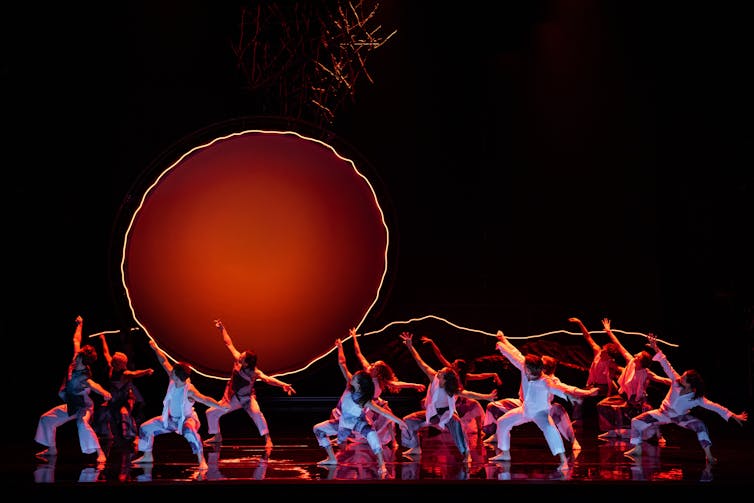
Daniel Boud/The Australian Ballet
Black rock formations that frame the stage are turned around and repurposed, their constructed nature exposed, a metaphor for our inherited Australian identity.
Neon lights and projected computer-generated images combine with the natural moon, water and tree branches, reminding us we are both of country and city in the 21st century.
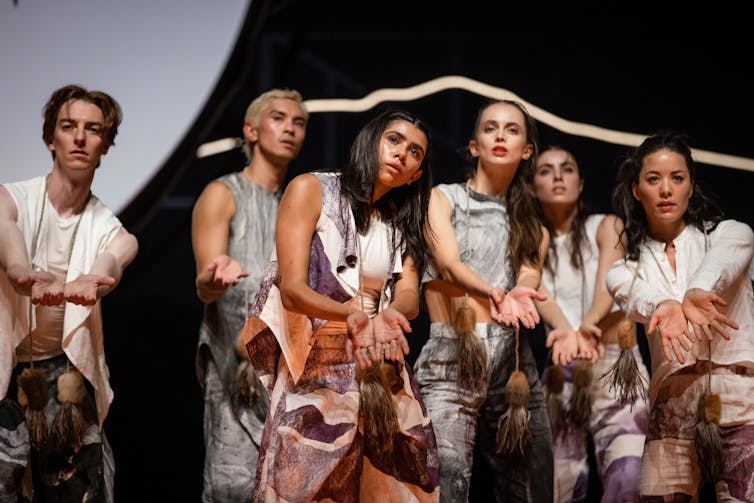
Daniel Boud/The Australian Ballet
THE HUM shows a community where members are finally facing each other but haven’t yet worked out who they are together – although they know where to begin. The audience is equally tasked with this provocation.
Paragon
In Paragon, Topp shows us who The Australian Ballet has been in footage, images, dance styles and in the returning dancers who carry the company’s history in their bodies. These include Marilyn Rowe, who had her debut with the company in 1965, Simon Dow, who joined in 1974, and Lucinda Dunn, who danced with the company for 24 years until 2014.
Topp also shows us who we might be into the future in the bodies of the company’s young dancers.
And in bringing these elements together on the one stage, she shows us where we are now.
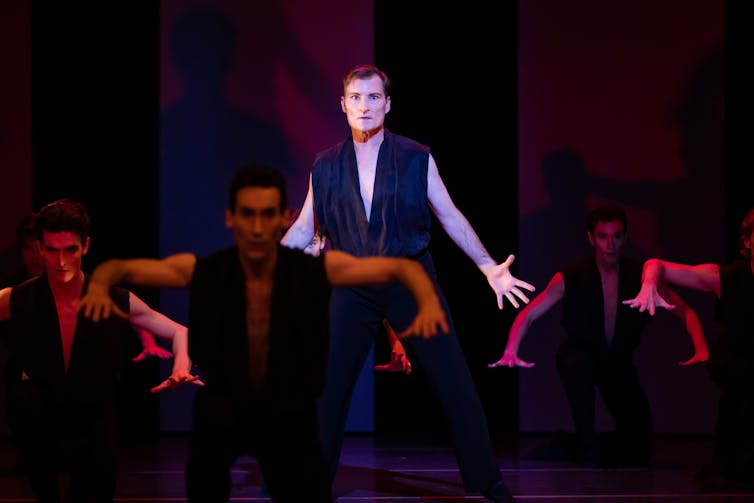
Daniel Boud/The Australian Ballet
The work exudes a combination of strength and tenderness. Avoiding any trumpet blowing, it offers a thoughtful and sometimes playful celebratory reflection: achingly nostalgic yet its own contemporary work.
Divided into 12 parts, it juxtaposes lyrical pas de deux in Grecian white with powerful ’80s Spartacus-style male corps de ballet in black; almost floating 19th-century ladies in long gold ball gowns moving through elegant formations with sets of duos in studio wear moving independently or in canon.

Daniel Boud/The Australian Ballet
The ages of the dancers are highly visible. Older and younger bodies dance on the ballet stage together, demanding our attention. Much like THE HUM, Paragon is a result of this community, an honouring of ancestors and a revelation of ever-present history.
The Australian identity is a work in progress, but in Identity it is heartening to witness that one of our iconic cultural institutions is up for the challenge.
Identity is at the Sydney Opera House until May 20, and then at Arts Centre Melbourne June 16-24.
5 Australian women choreographers you should know (and where to see them in 2023)

